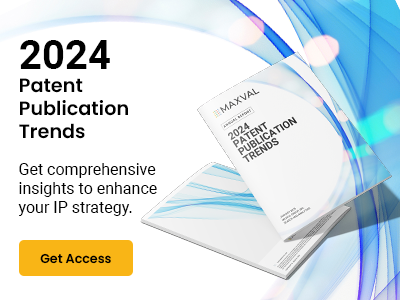In Part 1 of our conversation with Venu Venugopal, MaxVal’s Chief Operating Officer, we explored his journey into the IP industry and how IP management software has evolved over the past decade. In this follow-up, we dive deeper into the challenges faced by IP departments in the corporate and law firm sectors, specifically on market forces, technology advancements, solution selection, and cost constraints.
Key Challenges for IP Departments and Law Firms
Elisa Cooper: What are some of the biggest challenges facing corporate IP departments and IP law firms today?
Venu Venugopal: While some challenges are universal, others are unique to different segments of the market like corporate and law firms.
For both corporate IP departments and law firms, one of the biggest concerns is budget constraints and the pressure to derive more and more value from their investments from all the solutions they use. This means they are looking for IP solutions with a broader set of capabilities and are more or less plug-and-play, seamlessly integrating into existing solutions and workflows in their eco-system, offering consolidation of point solutions – all driving faster time-to-value and efficiency.
Another common challenge is data accuracy and data management. With large, global portfolios, organizations need robust and continuous data verification, availability of a variety of data through dependable third-party or direct PTO data integrations, and automated systems to cross-check country laws and payment schedules.
For law firms, the challenges are a bit more complex. Unlike corporate IP teams that manage their own portfolios, law firms serve multiple clients with differing needs and manage their individual portfolios in many cases. Their IP management systems must support multi-client environments and associated workflows, including complex role hierarchies and billing mechanisms that align with their service models. These firms may also require seamless integration with their document management, project management, and internal timekeeping and invoicing platforms.
Choosing the Right IP Management System
Elisa Cooper: What should IP professionals consider when selecting an IP management system?
Venu Venugopal: There are several key factors to consider:
- Value for Investment – Organizations should assess how quickly they can derive value from a solution set. This includes features/functionalities, ease of implementation, time to value, and support from a skilled professional services team.
- Integration Capabilities – The system may need to support seamless data migration, validation and verification, intake of ongoing data, integration with renewal tools, and analytical capabilities and reporting. Additional capabilities we see as a core need are budgeting and forecasting, e-billing, and portfolio analysis.
- Scalability, Performance, and Security (SPS) – As IP portfolios grow, the architecture of the platform must support increasing volumes of data from multiple sources, increasing size of portfolio, integrations (as discussed as part of the previous point), and multi-region support, all while maintaining high performance and high security standards.
- User Experience (UX) – Enterprise applications must now match consumer-grade usability. The best IP management systems provide an intuitive, modern interface that simplifies complex tasks. It also should provide a multi-role hierarchy and associated configurability.
The Future of IP Management
Elisa Cooper: Where do you see the IP management market heading in the next five to ten years?
Venu Venugopal: The IP market will continue its upward trajectory, with a growing base of patents and trademarks in force. Asia will remain a major driver of IP growth, further shifting the center of gravity away from Western countries. At the same time, because of the sheer volume of IP assets tied to the traditional bases like the US, Europe, and Japan, those markets will continue to be attractive for IP solutions for a long time. In terms of innovations and commercialization of those innovations, Western countries continue to have an edge, and hence, IP solutions cannot ignore them as a market.
In terms of technology, software and services will become even more intertwined. True SaaS solutions will continue to evolve, incorporating more automated services directly into the software, reducing the need for manual processes within a service’s workflow. I think this is where true SaaS solutions will have a significant edge, by easily integrating automatable and automated service steps into the software.
Another significant shift will be the expansion of AI across the entire IP value chain. AI is already being leveraged in areas like prior art search, drafting, translations, patent viability and assessments, but we expect AI to play an even larger role in portfolio analysis, competitive intelligence, infringement detection, and legal positioning, all leading to additional efficiency, accuracy, scale, and overall value.
As AI capabilities mature, we’ll see enhanced tools that predict filing success rates, recommend optimal jurisdictions, and streamline the prosecution process. While AI’s impact on early-stage IP evaluation and portfolio management is clear, it may take longer for AI to fully automate the middle stages of IP workflows, such as docketing, correspondence, and renewals.
Overall, in the coming years, the technology-driven advances in solutions will deliver greater automation, smarter analytics, and tighter integration between software and services, allowing professionals to innovate faster, develop and manage larger portfolios, drive more value from investments, all taking IP industry as a whole to a new level.




